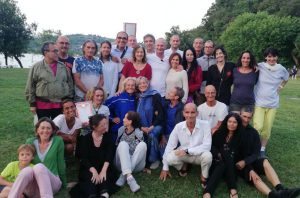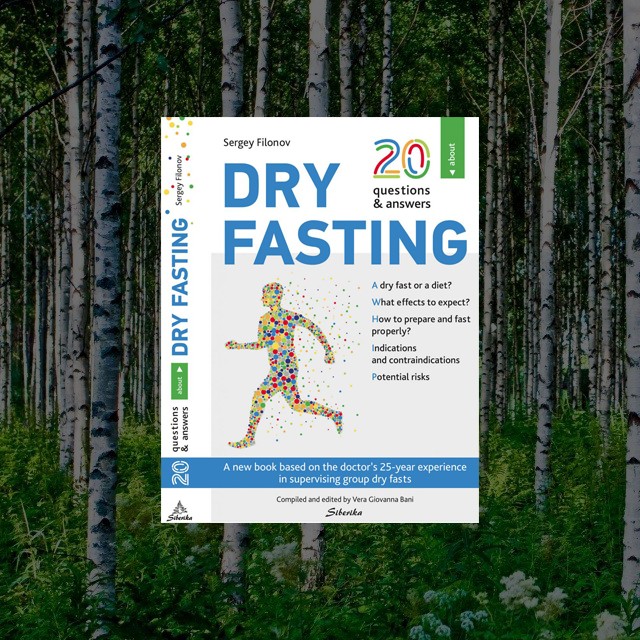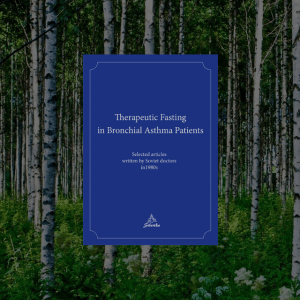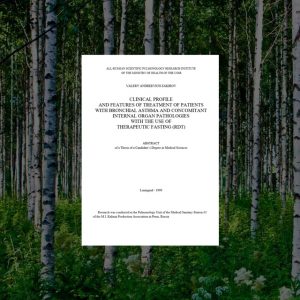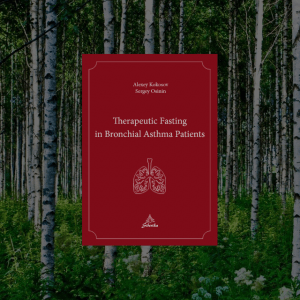20 Q&A About Dry Fasting – Sergey Filonov – eBook
Therapeutic fasting is not simply abstinence from food. There are rules of comfortable and effective fasting, just as there are rules of healthy eating. If you are aware of these rules, you won’t feel lost if you experience nausea or headaches during fasting. You’ll have no doubts as to when and where to utilize enemas for intestinal cleansing. You’ll be able to figure out whether fasting is contraindicated in your case, and when you start, you’ll know when to break the fast. You won’t risk by eating salt and butter during the refeeding period.
Familiarity with the rules of fasting will allow you to attain positive results and avoid the side effects as much as possible. Many of the rules described in Sergey Filonov’s were developed by Soviet doctors in the 1960s-90s. At that time, the Ministry of Health Care of the USSR conducted extensive research, aiming to introduce fasting as a clinical treatment method. Based on the results of this work, the Ministry created manuals for doctors who were not experts in fasting. These manuals contained detailed protocols and recommendations on using this method for various clinical purposes. Dry fasting (fasting without water) was one of the discoveries made by researchers during that time period. It drew the scientists’ interest as a way to shorten the duration of classic water fasting. In order to obtain the desired effect from a one-time wet fasting course, it should last between 2.5 and 4 weeks, which, of course, is a very long time for a patient to remain in a hospital. Researchintodryfastingconducted in the early 1990s, demonstrated its high efficiency – the result of one day of dry fasting approximately equals that of 3 days of wet fasting. This discovery allowed to significantly decrease the duration of treatment. The combined method – 3 days of dry fasting followed by 10-14 days of wet fasting – has been used in clinical practice since the 1990s. An additional unusual fact has also been discovered: it turned out that, as counterintuitive as it may sound, dry fasting is much better tolerated than wet fasting.
This became great news for the adherents of intermittent fasting. They could easily switch from the classic 5:2 regimen to the 6:1 dry regimen, thus obtaining an additional day for their social life without sacrificing the effect of fasting. Doctor Filonov has been using dry fasting in his clinical practice for approximately 25 years. He based his method on the experience with 1 to 3-day dry fasts obtained by the Soviet doctors, and developed it, increasing the duration of the fasts to 11 days. His book is for those who want to attempt and follow the path of dry fasting or are already using it. It contains all the required recommendations and rules, some of which are based on the conclusions of scientific works conducted in the 1990s, and others –on the author’s own experience in his clinical work.
“20 Questions and Answers about Dry Fasting” is the only book that provides a detailed instruction for conducting dry fasts of various durations. There have been, in fact, scientific publications and official recommendations on dry fasting for up to 3 days, but longer fasting terms have remained terra incognita up until recently. Dr. Filonov’s book is of interest as a pioneering work in this field, even if it does not aspire to a status of a scientific work. We hope that, in addition to fasting aficionados, the book will also elicit an interest in scientists who will conduct further research of this topic.
Editor: Vera Giovanna Bani
Siberika books, 2019, 282 p.
More information:
18,00€
Description
Historical background
Pioneering studies of the healing properties of dry fasting began in Russia in the 1980s. By that time, there were already groups of doctors in the country who had successfully applied wet fasting in their practice. All of them were students of Professor Yuri Nikolaev, the founder of the Soviet therapeutic fasting school.
Psychiatrist Yuri Nikolaev (1905-1998) arrived at fasting as a treatment method in the 1950s, when he was working with patients suffering from schizophrenia in a hospital setting. Once, contrary to established practice, he did not resort to forced feeding of patients who were refusing food and found that the refusal to eat leads to a noticeable positive effect on the disease symptoms. In 1960, Yuri Nikolaev defended his doctoral dissertation on the effects of wet fasting in patients with schizophrenia and continued to develop this method, applying it in the treatment of other diseases. Thanks to his enthusiasm and the positive results, he managed to inspire many doctors with the new method and gain support from the USSR Ministry of Health.
The recognition of wet fasting as a treatment method by an institute as conservative as the Ministry of Health meant that this method had reached a new level of development. Several hospitals in different Soviet cities opened therapeutic fasting departments.
Since 1969, the Ministry of Health began to periodically issue guidelines for doctors on the use of fasting in the treatment of neuropsychiatric diseases, hypertension, bronchial asthma and digestive diseases. Doctors who conducted medical research began to publish scientific papers and to defend candidate and doctoral dissertations on the topic.
A total of 84 dissertations on therapeutic fasting were defended between 1960 and 2010 in the following spheres:
pulmonology – 19
cardiology – 19
neurology and psychiatry – 18
gastroenterology – 10
physiology and pathophysiology – 10
hematology – 3
dermatology – 2
endocrinology – 1
Of all these theses, two were devoted to dry fasting. The first of these is the work by Valery Zakirov (1990), in which the fasting method is used to treat patients with bronchial asthma in complex cases when concomitant pathologies of internal organs are present. The author compared the effectiveness of treating such patients with medication (225 people) with the effectiveness of their treatment with wet fasting (120 people) and a combination of dry fasting and wet fasting (30 people). Dry fasting lasted 3 days. Based on the results of patient condition assessment before and after treatment, the author drew the following conclusions: fasting is more effective than traditional medication in treatment of bronchial asthma, dry 3-day fasting is well tolerated by patients and can reduce the overall duration of treatment when a combination of dry and wet fasting is used (get a copy).
The author of the second Ph.D. thesis on the subject of dry fasting is Igor Khoroshilov (1994). His work was commissioned by one of the military departments, which was interested in the problem of human survival in the absence of food and drink. Igor Khoroshilov studied the condition of a group of volunteers who conducted a 3-day dry fast in a pressure chamber, which served to create a controlled external environment. Before and after fasting, the members of the group evaluated the state of the cardiovascular, digestive, urinary systems, investigated the state of protein, carbohydrate, lipid and water-mineral metabolism, studied changes in the neurohumoral regulation of the body. Based on the data, the researchers concluded that none of the bodily systems suffer from a 3-day dry fast.
Attention! The conclusion about the safety of 3-day dry fasts does not mean that you cannot harm yourself by conducting such a fast. In an interview that Dr. Khoroshilov kindly gave us in 2019, he noted that during a fast itself (both dry and wet), cases of serious health problems are extremely rare, but they can happen after the fast, during an incorrect exit.
Dr. Khoroshilov was not satisfied with the conclusion that dry fasting was harmless; he was interested in whether it was beneficial. He obtained an affirmative answer to this question in the course of the same work conducted in a clinical setting, where he subjected patients already undergoing a water fasting course to a short dry fast (1-3 days). The conclusion of his dissertation contains a list of diseases for which the author recommends combined (dry and then wet) fasting. (get a copy)
Now one can often hear that one day of dry fasting is as effective as three days of water fasting, but no one cites the primary source of this information. We are pleased to report that the first to make this statement was Dr. Khoroshilov in 1994.
The works of Zakhirov and Khoroshilov, who proved the safety and effectiveness of dry fasting, were the scientific foundation that allowed practitioners to use this method more confidently in treating patients. A great contribution to its development was made by L.A. Schennikov, V.P. Lavrova and S.I. Filonov, who independently began to experiment with fasting without water in the 1990s, gradually increasing the duration of fasting and expanding the list of indications and contraindications. At that time, the Ministry of Health was not yet providing official recommendations to doctors on the use of dry fasting, so the enthusiasts conducted their work with patients mostly autonomously, at their own risk, just as naturopaths did. The result of these doctors’ work was the vast experience they accumulated in conducting dry fasts and the developed methods of its execution. Each one had a specific method, slightly different from the rest. The fasting time depended on the patient’s condition and ranged from 7 to 11 days.
The first doctor to be officially recognized for his method was L.A. Shchennikov. In 1993, he was granted a patent for the Method of body rehabilitation, which included a 7 to 11-day dry fast. The purpose of the method is “to cleanse the body of products of incomplete metabolism, restore the body’s immunological status, increasing its resistance to external impacts, eliminating the need for drug treatment, preventing and eliminating disorders in the human body”.
Before the patent was granted, the Shchennikov method was tested by the state expert commission on a group of patients that comprised 20 people. This group included people between 20 and 63 years old suffering from hypertension, osteochondrosis, cardiovascular disease, lung cancer, bronchial asthma, kidney stone disease, indigestion, gastric ulcer, varicose veins, metabolic disorders, chronic ENT diseases, weakening and decline of immunoprotective processes, uterine fibroids.
The method was tested under health resort conditions. The expert commission comprised six professors from one of the state medical institutes. The experiment lasted 14 days: 2 days of preparation for fasting, 9 days of dry fasting and a 3-day exit. It was augmented by an in-depth clinical assessment of the patients’ condition and monitoring of biochemical, immunological and physiological parameters. Changes in blood, urine, blood pressure, body weight and other parameters were recorded.
At the end of this experiment, the expert commission confirmed the presence of a clear positive effect of dry fasting on the health status of 18 out of 20 patients. The commission recommended that the Schennikov method be used for purposes of health improvement by a wide range of people.
Finally, in 2005, the Russian Ministry of Health included the dry fasting method in its Treatment Guidelines. The use of this method, according to the Ministry recommendations, is limited to 3 days.
About the author
60 years ago, Soviet Siberia was an astounding amalgamation of the ancient archaic world and the latest technologies that laid claim to international superiority. It was especially true for medicine, which adhered to advanced treatment standards in large cities and was almost absent from distant downtrodden villages, where the Old Believers treated each other with unique methods that urban residents have never heard of. It is at the junctions of worlds and epochs that talent is often born and manifested, since the calm atmosphere of measured existence is destructive to it.
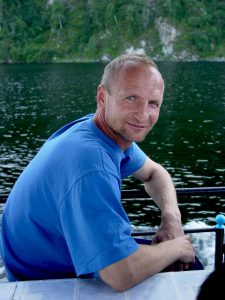
Sergei Filonov was born into a family of doctors in a small town lost in the spurs of the Altai mountains in Western Siberia. There, in Altai, there is still a lingering belief that somewhere in the area is the entrance to the mystical country of Shambhala, a magical realm of bliss, which has been unsuccessfully sought for many centuries.
The world of medicine was just as mysterious and promised as much of the delight of discovery to Sergei Filonov, a young student at the Altai Medical Institute. Intimate contact with the land, the traditions of the Siberian peoples,and the healing practices of the Old Believers gave him an intuitive feeling that a person is himself a natural pharmacy, that he possesses everything required to treat any diseases; all one needed was to make these natural medicines work for the benefit of the body using toil, patience and willpower.
Looking back now, it seems that Sergey Filonov was led to the idea of dry fasting by a series of accidental meetings with various people, such as patients who cured themselves by fasting, and the then-famous medical experts, who were enthusiastic about fasting as a treatment method, and put quite an effort into encouraging its adoption by official medicine.
Another contributing factor was his job at the Goryachinsk health resort on the shore of Lake Baikal, where Sergei and colleagues opened a therapeutic fasting unit in 1990. In those years, despite the overregulation typical of all large structures, Soviet medicine was sometimes highly responsive to new trends. Therefore, the doctors interested in such practices were able to open such departments in state medical institutions throughout the country. Fasting produced good results. It allowed to defeat asthma, hypertension, arthritis, and it was successfully used to treat schizophrenia. But Sergey was not satisfied: sometimes a patient’s illness only retreated temporarily, and after he or she came out of the fast, some of the symptoms returned. How could the therapeutic effect of wet fasting be enhanced?
Sergey’s first prolonged five-day dry fast followed his fall into an ice-hole during winter fishing and subsequent acute frontal sinusitis (inflammation of the frontal sinus). Sergey was not a novice to wet fasting, he had fasted himself and treated patients with sinusitis and frontal sinusitis using wet fasting, but only achieved a therapeutic result after the tenth day. This time he decided to try dry fasting himself. The terrible headaches accompanying the frontitis were alleviated on the fifth day. What had struck Sergey the most was the short time in which the therapeutic effect was obtained.
It was psychologically difficult to begin conducting dry fasting on patients. When studying to be a doctor, Sergei was taught that a person can only survive 3-5 days without water, after which death would be imminent… His first patient, T., who underwent a dry fast, suffered from chronic prostatitis. T. started with a wet 14-day fast. During fasting, the disease seemed to retreat, but then returned.
Sergey’s reasoning was follows: prostatitis is basically an infectious process, any infectious agents like to reproduce in water, and any infectious process causes edema. If there is no water –there will be no edema.
T. was very serious about treatment, and he appreciated the arguments and reasoning behind dry fasting. He went through five days of dry fasting, followed by five days of wet fasting. This fast had a much more powerful effect than the preceding 14-day wet fast. Exactly one year later, T. sought advice again and said that he would not conduct wet fasts anymore. He also stated that he really liked the effect of dry fasting, and that there were no exacerbations thatyear. This time he conducted a seven-daydry fast. Subsequently, T. often called and reiterated that he was very pleased with the results.
After that, Sergey and his colleagues began to gradually try 3-to-5-day dry fasts for patients at the Goryachinsk resor. One of them went on for as long as 7 days, and the effect was wonderful. But at that point, of course, Sergey was still afraid to conduct dry fasting with patients for longer than seven days.
Sergey’s meeting with one of the founders of the Russian school of dry fasting Leonid Schennikov, which took place in 1994 at a therapeutic fasting conference in the Republic of Buryatia, served as an impetus to increase the duration of fasting. Leonid was a unique person, a traditional healer with vast experience in the dry fasting practice, whose patients have fasted for 11 days. The meeting with Shchennikov and interactions with his patients inspired Sergey. Upon returning to Altai, he himself underwent a ten-day fast, spending it on horseback, rather than in bed. That’s when he finally realized that prolonged dry fasts can only be conducted in nature, preferably up in the mountains and near mountain rivers. Cities and hospitals are hardly suitable for this process.
“Then I decided to try prolonged fasting on patients. My first patient, who went on a 9-day fast, suffered from rheumatoid arthritis. The result of fasting was excellent. Subsequently, by trial and error, I realized that the maximum therapeutic effect of dry fasting occurs precisely on day 9. In my books I also mention a 10 or 11-day term, but practice has proven that the peak falls on the 9th day. Nevertheless, I convince my patients to set their mind on a 10-11 day fast, since the crisis may set in on the 9th day and last a day or two. During this crisis, the maximum therapeutic effect occurs, and unless you get through this crisis, you can’t come out of the fast.”
The unique experience that Sergey Filonov has gained over 25 years of working with patients is shared in his books. These books are written for all fasting enthusiasts who may want to try out his method, rather than for fasting experts. Everyone must remember: dry fasting is a powerful tool that can be dangerous in inept hands.
If you do decide to make use of it, read the books carefully through to the end and do not forget to consult your doctor.
About the publisher and editor

Vera Giovanna Bani was born in 1964 in the city of Treviso in northern Italy and, having received a university degree in Russian language and literature, moved to Moscow, associating her life with Russian culture for many years. Immediately after her move, she was inspired to translate the books of those Russian writers who captivated her, even if the author was little known in Russia itself or forgotten by compatriots. Having encountered such a book, Vera set about searching for Italian publishers, which sometimes took longer than the translation itself.
Among others, Vera had introduced Italian readers to six books by the Russian writer Vadim Zeland about Transurfing, a philosophical doctrine of parallel realities that anyone can apply in their life. This teaching mesmerized Vera, and she was able to find an interested publisher. Thanks to her brilliant translations, the idea of Transurfing became popular throughout Italy: the teaching quickly developed a fan following, training courses were launched, and even imitators appeared. Something similar happened with “400 Anni di Inganni” by N. Fomenko and G. Nosovsky, a book about the secrets concealed by modern chronology. The translator’s enthusiasm for the subject was conveyed to the translation itself, and in cases like this the results of the work always bears the noble imprint of the translator’s persona.
Both the Soviet Union and Russia still conceal entire strata of remarkable writers and thinkers that readers in the West are not familiar with. Few of these authors manage to evade obscurity – major publishers prefer not to risk by taking on unknown authors. In order to give them a chance, Vera and people with similar views launched an independent small publishing house–the Siberika project.
The first author, whose books were translated into Italian by this publishing house, was Dr. Sergey Filonov. He is a doctor with unique experience in conducting group dry fasting with patients, and he wrote two books on this subject–in 2008 and 2015. They were released by a small publishing house in Siberia and remained almost entirely unnoticed by the general Russian public: in those years, the country was engaged in building market relations, interest in the economy was on the rise, and a healthy lifestyle was on the decline.
Vera believed in Sergei Filonov, in the value of his books, and began the difficult work of combining two works into one, correcting flaws in the text, fact-checking and translating it into Italian. The result of this work was the 680-page monograph “Digiuno secco. Gli ultimi sviluppi della digiunoterapia in Russia,” which was released in 2017. The most pleasant thing that followed was the appreciation from Italian readers who wrote letters, thanked, went to fast with Sergey in Altai, participated in collective dry fasting practices, which Sergey began to carry out not only in Altai, but also in Europe since 2019. At first, these practices were conducted due to the interest of fasting enthusiasts from Italy, and then patients from other countries began to join them.
In response to the wave of interest that followed the release of the monograph, a new book on dry fasting was compiled as part of the Siberika project, outlining the method’s essential ideas in the form of questions and answers. At the end of 2019, it came out in English under the name “Sergey Filonov, 20 Questions and Answers about Dry Fasting.”
Presenting the materials in a question-and-answer formal lowed to simplify the reader’s perception to a certain extent without missing a single important aspect. The new book included all the vital materials on the subject, compressed into a volume of 282 pages. The purpose of the book is to give everyone interested the comprehensive practical knowledge for conducting a dry fast independently. It contains detailed instructions for preparing for, conducting, and exiting a fast, and provides detailed accounts of various schemes used.
The Siberika project is grateful to two remarkable translators, Yana Solominskaya and Francesca Morgante, who made this book possible.
Afterword to the first collective dry fasting practice in Europe conducted by doctor Filonov
(BioenergyResort, Salinera Strunjan, Slovenia, 29 June 2019 –13 July 2019)
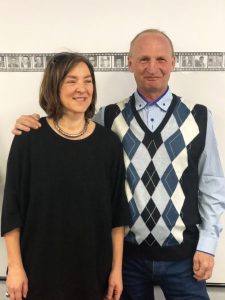
On July 13, the 14-day dry fasting practice ended in Strunjan (Slovenia, near the border with Italy), which had changed the lives of its participants in many ways. The weather was hot and unfavorable for dry fasting during the first week, which bothered us (the organizers) very deeply. But, as it turned out, we were the only ones unprepared for the scorching sun, while fasting devotees from Italy, France and Switzerland, who made up the majority of our group, felt wonderful. The days that followed were more pleasant, with moderate and windy weather, which made our withdrawal from fasting and the beginning of food intake comfortable.
Dr.Filonov, who usually practices in the much cooler conditions of the Altai mountains, has repeatedly expressed his admiration for the endurance of our group members. He said that Russian patients practicing fasting would have hardly been able to refrain from eating and drinking for 9 days in such heat, and in general he was pleasantly surprised by the perseverance, determination and curiosity of all participants.
The Salinera resort, with its large park, apartment area and hotel, has almost completely satisfied our needs. I say “almost completely, because the apartment area was located on a hill overlooking the park, and climbing stairs several times a day to the apartment, which was used for massage treatments, or to the house after a stroll or rest in the garden were quite tiring for the fasting practitioners, especially on the most stressful days of practice. Perhaps this was the biggest drawback that could be avoided in the future by choosing the hotel rooms, which are located lower on the hill and are easily accessible from the beach and the park.
Dr. Filonov’s method of purification, functional restoration and treatment of the body combines dry fasting with daily procedures that accelerate bodily cleansing. The most important of these procedures is the trigger point massage and honey massage of the abdomen, back, arms, legs, neck, head and oral cavity. Despite the fact that this massage is not at all relaxing, everyone was satisfied, and no one ever complained about the sometimes painful manipulations performed by the experienced hands of mighty Andrei, the nephew of Sergei Filonov, the doctor himself and his daughters Nastya and Olga. Between 9 a.m. and7:30 p.m., it was all about work in the massage rooms: no meditative music, no aromas or incense, only constant interaction in four languages (Russian, Italian, French and English), required for instructing and communicating with the patients, and the inevitable odors of circulating toxins exiting the body. Not too pleasant, but very effective. Thanks to this holistic approach, many have witnessed small miracles that have already occurred in a short time of practice: after a 7-day fast someone discovered the absence of a lipoma previously palpable in the armpit, someone else noticed the dissolution of an inguinal hernia, yet another subject began to walk normally again after several months of very limited mobility, amazed that he could walk 14 km along the Portoroz- Strunyan route and back. Tinnitus decreased significantly in one subject, others experienced a decrease in swelling of the abdominal cavity and discomfort of the gastrointestinal tract…. All of the above were small, quick improvements, which were the body’s reaction to the fast. The maximum effect, the doctor says, will be noticeable three weeks after the end of the practice.
Fasting patients were also enthusiastic about other procedures –dowsing in ice-water and hirudotherapy. Even the most prejudiced people immediately became friends with leeches – small creatures that have served humans for hundreds of years, and which medicine has almost forgotten in recent decades. After the procedures, almost all our patients decided to take their leeches home, which gave us great pleasure. We ourselves released the rest in one of the channels of the town of Treviso, wishing them a long life and thanking them for their help.
We did our best to make this first dry fasting practice in Europe according to the method of Dr. Filonov unforgettable, and I hope that we managed to succeed. Behind the scenes, there were many stressful situations, and this caused a hypertensive crisis, which significantly constrained me in the last days (I had to miss some evening sessions), but on the whole I would say that everyone was satisfied with our practice.
My deep gratitude to Salinera resort staff, who had to bear with us sometimes:);
-to my colleague and guardian angel Elena Kuzmich, who shared the entire workload with me and without whom I would never be able to complete the practice;
– to Eric, Maria Theresa, Angelica, Fabrizio, Italo and Paolo, who put their cars, tools and their time at our disposal; – all the participants for the commitment and ability to collaborate that they demonstrated;
– and, of course, the excellent team of Dr. Filonov, who managed to charm and gain the respect of our entire group and those who joined us later.;
We hope to be able to repeat this adventure next year.
I wish everyone a happy summer
Vera Giovanni Bani
July 20, 2019
On our first group dry fasting practice in Slovenia 2019
(review by Elena Kuzmich, co-organizer)
If prior to the trip to Slovenia, someone had asked the future participants of our collective dry fasting practice why they were going to put their bodies under such stress, they would have surely answered: “It will be an interesting new experience.”
Basically, just like any participants of any event that not everyone is cut out for, and which puts one’s Spirit and Body to a serious test. Like a marathon or a mountain ascent under thin air conditions.
Before heading to Slovenia, I stopped by Nikolay the Miracle Worker, who is reposed in a small church in the town of Bari in southern Italy. I sat by his relics for a long time and asked that this Russian fasting school project on European soil be a success… First of all, because it was our first practice in Europe. And secondly, because there were patients with very serious pathologies among the intended participants of this collective practice, which was to take place under the supervision of dry fasting expert Sergei Filonov. All thirty participants from four countries, and we, the organizers, had to combine energies, and even ask for a little extra from the Higher Forces, so that an integrated whole was born out of all of our aspirations to learn and teach, help and accept help, give and take.
And… it worked!
